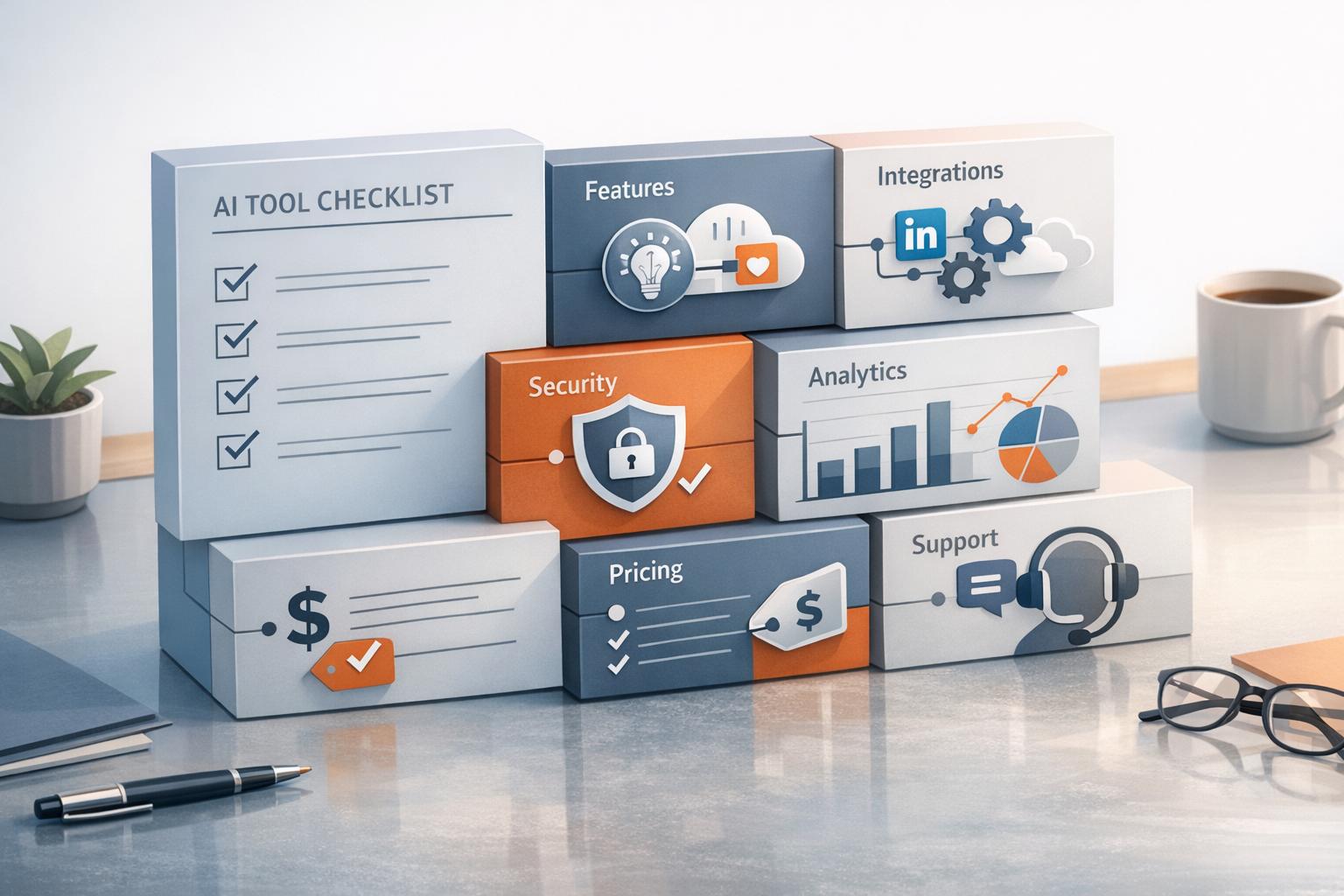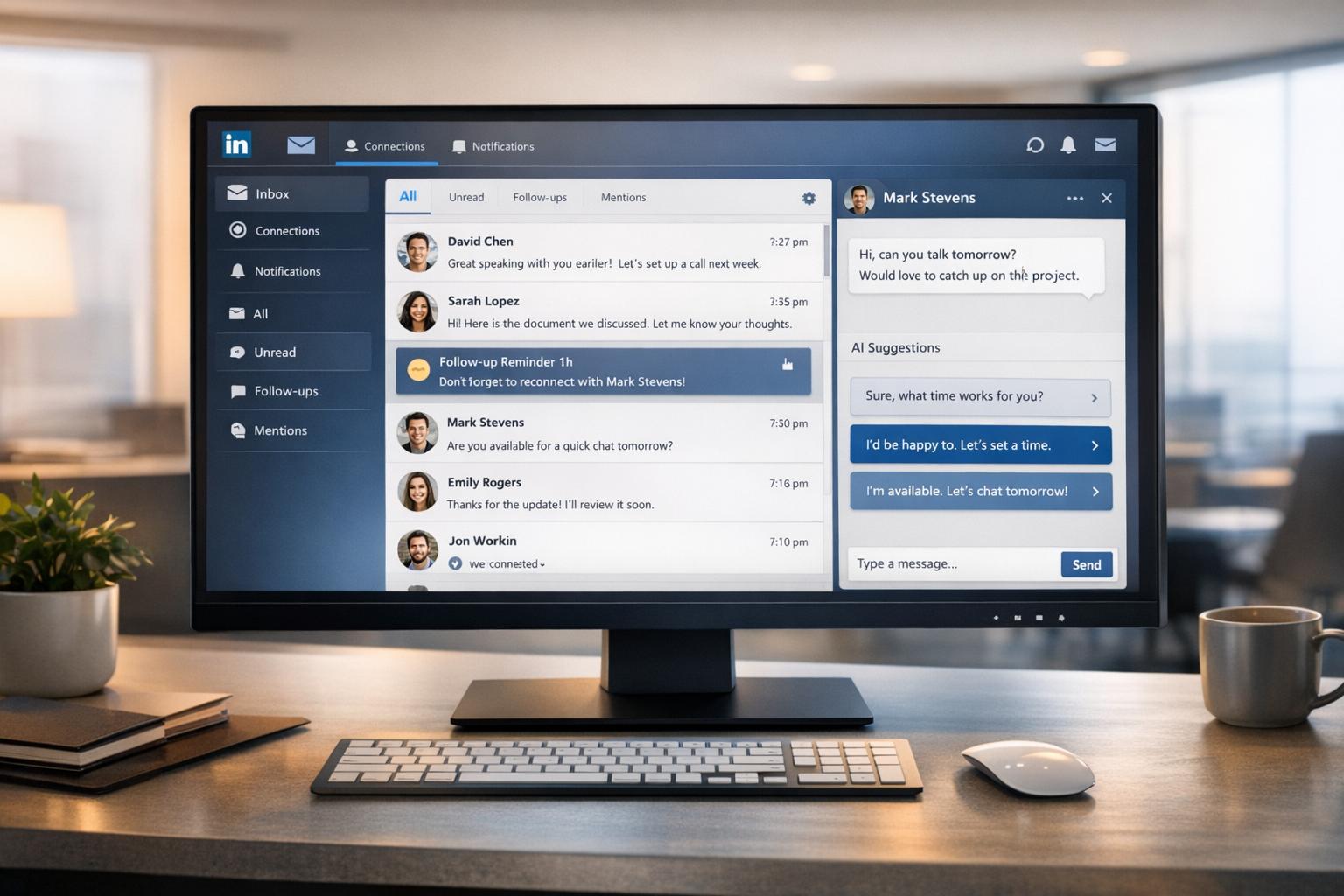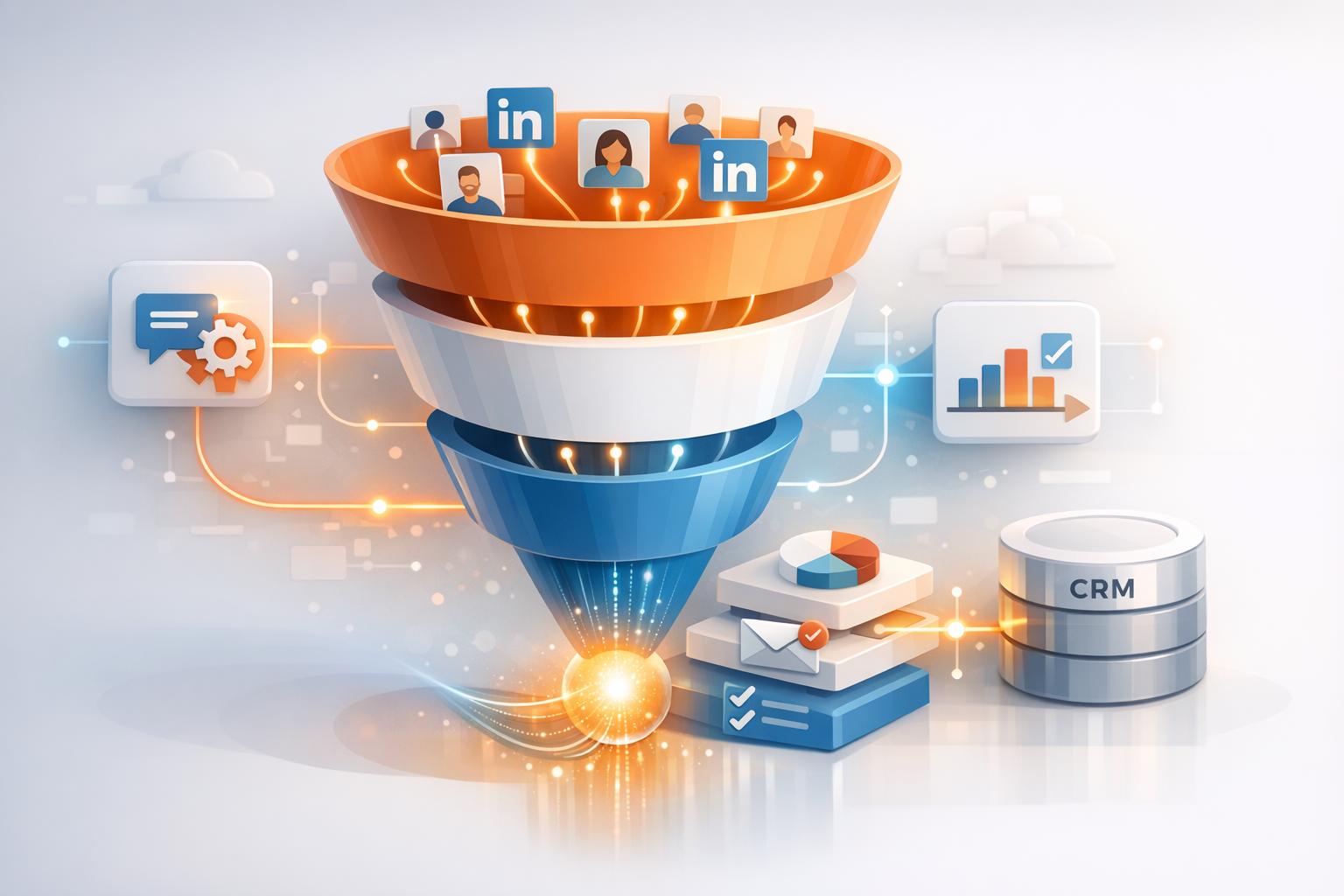
White label lead generation SaaS is reshaping how businesses approach sales in 2025. These platforms allow companies to use advanced AI-driven tools for prospecting, outreach, and lead management, all while maintaining full control over their branding. This eliminates the need for costly custom software development and provides scalable, subscription-based solutions.
Here's why businesses are turning to white label lead gen SaaS:
- Brand Control: Companies can rebrand the software to align with their identity, strengthening client relationships.
- AI-Powered Automation: Features like predictive lead scoring, personalized messaging, and timing optimization improve efficiency and results.
- Scalability: Multi-client management enables businesses to support diverse clients without additional infrastructure.
- Cost Savings: Subscription pricing reduces upfront costs and ensures predictable revenue streams.
- Market Fit: With the rise of remote work and the need for digital-first sales tools, these platforms meet modern business demands.
Platforms like SalesMind AI exemplify this trend, offering LinkedIn outreach automation, real-time lead tracking, and multi-client management. By combining AI with customization, businesses can deliver tailored solutions without needing in-house tech expertise.
White label lead gen SaaS is paving the way for faster, smarter, and more efficient B2B sales strategies in 2025.
4 white label SaaS tools that will make you $$$ in 2024 [lead gen tools]
Main Benefits of White Label Lead Generation SaaS
White label lead generation SaaS platforms bring a range of advantages that are especially valuable in 2025’s competitive market. These benefits include scalability, cost savings, branding flexibility, and advanced AI-driven automation.
Scalability to Meet Diverse Client Needs
One of the standout perks of white label platforms is their ability to support multiple clients without requiring separate infrastructure for each. Traditional custom development often demands individual builds for every client, which can slow down growth and increase costs.
With white label solutions, a single platform can handle various client configurations. This makes onboarding new clients faster and ensures consistent performance across accounts. Plus, businesses can rely on shared resources instead of hiring separate development teams for each project. Multi-tenant architecture allows for tailored workflows within a unified system, offering personalized experiences for each client.
As the client base grows, these efficiency gains multiply. Each additional client becomes more profitable, making scalability not just a technical advantage but a financial one as well.
Cost Savings and Predictable Revenue Streams
The financial benefits of white label SaaS go beyond reducing upfront development costs. Building custom software often requires significant initial investment, followed by ongoing maintenance expenses. White label platforms, on the other hand, typically operate on subscription-based pricing, which spreads costs into manageable monthly payments. This improves cash flow and reduces financial risk.
For businesses, this subscription model also enables predictable pricing for their own clients. Stable, recurring revenue streams make it easier to plan long-term and invest in growth. Additionally, since the platform provider handles updates and security patches, companies save on technical staffing and infrastructure costs.
Full Branding Control and Customization
White label platforms provide businesses with complete control over branding, which is a major asset when building strong client relationships. Companies can customize the platform to reflect their brand identity, enhancing their market presence and credibility.
Customization options often include logo placement, color themes, domain settings, and user interface adjustments. Some platforms even allow for advanced features and API integrations to meet specific needs. By offering a solution that feels uniquely tailored, businesses can foster deeper client loyalty. This not only reduces churn but also opens doors for upselling additional services.
For example, SalesMind AI offers extensive white label options for LinkedIn outreach automation. Businesses can rebrand every aspect - from the interface to email notifications - ensuring a seamless and professional experience for their clients.
AI-Driven Automation for Better Results
AI integration takes white label lead generation platforms to the next level by boosting conversion rates and streamlining processes. Features like predictive lead scoring, automated personalization, and timing optimization give businesses a competitive edge.
Predictive lead scoring uses data analysis to identify the most promising prospects, allowing sales teams to focus on high-value opportunities. Automated personalization crafts messages based on prospect behavior and engagement history, ensuring a more tailored and effective approach. Advanced platforms even analyze factors like company details and past interactions to create messages that feel genuinely one-on-one.
Timing optimization is another game-changer. Machine learning identifies the best times to engage prospects, increasing open and response rates. Real-time lead tracking and engagement monitoring further enhance campaign performance by providing actionable data. Sales teams can refine their strategies on the fly, leading to continuous improvement.
These AI tools level the playing field, making cutting-edge sales automation accessible to businesses of all sizes. Smaller companies, in particular, can compete more effectively by leveraging these advanced capabilities.
How AI-Powered White Label SaaS Changes Lead Generation
AI is reshaping lead generation by making prospecting faster and more efficient. White label platforms with AI capabilities deliver results that manual efforts struggle to match, fundamentally altering how sales teams operate.
AI Features That Improve Outreach
AI-driven tools go beyond just saving costs - they enhance how businesses engage with prospects. Modern platforms use predictive analytics to evaluate prospects and create tailored messages by analyzing factors like company growth, hiring patterns, and behavioral signals.
- Automated messaging: AI crafts personalized messages for each prospect by analyzing LinkedIn profiles, company updates, job changes, and industry trends. It even adds role-specific details, ensuring messages feel genuinely customized. This personalization flows seamlessly into managing outreach across multiple channels.
- AI-powered unified inboxes: These tools handle multiple accounts and prioritize high-value conversations, ensuring timely follow-ups. Some platforms even suggest the best times to respond and recommend follow-up strategies based on prospect behavior.
- Real-time lead qualification: AI tracks engagement signals - such as profile views, message opens, and response sentiment - and updates lead scores dynamically. This allows sales teams to quickly identify when a prospect's interest is growing.
Case Study: SalesMind AI's LinkedIn Automation

SalesMind AI demonstrates the power of white label platforms in transforming LinkedIn prospecting. Its AI engine analyzes prospect profiles and company data to create highly personalized connection requests and follow-up messages. The result? Better response rates compared to generic outreach.
The platform’s lead scoring algorithm evaluates prospects based on criteria like job title relevance, company size, recent activity, and engagement history. This helps users focus on the most promising leads.
With a unified inbox, SalesMind AI lets users manage multiple LinkedIn accounts in one place. AI-powered prioritization ensures that high-value conversations are addressed promptly, improving efficiency and response times.
Real-Time Engagement and Boosting Efficiency
White label platforms like SalesMind AI combine advanced analytics with real-time processes to redefine sales automation. Machine learning identifies the best times to engage prospects and analyzes conversation tone and responses to detect buying signals.
The time savings are impressive. By automating tasks like lead research, message creation, and follow-up scheduling, sales teams can dedicate more energy to building relationships and closing deals.
Automated follow-ups ensure consistent engagement. AI determines the ideal frequency and tone for each prospect, maintaining communication without overwhelming them.
These AI-driven systems work nonstop - identifying leads, engaging prospects, and qualifying them in real time. Businesses that adopt white label solutions like SalesMind AI can offer cutting-edge sales tools to clients without needing extensive in-house tech resources.
sbb-itb-817c6a5
How to Use White Label Lead Gen SaaS in 2025
To make the most of your white label lead generation SaaS in 2025, focus on scalability and AI automation while aligning the platform with your business goals. Choose a solution that complies with regulations and supports growth through partnerships. With the right approach, you can meet market demands and drive meaningful results.
Steps for Platform Implementation
Start by selecting a platform that offers powerful AI capabilities, smooth integrations, and extensive customization options. Look for features like advanced LinkedIn automation, lead scoring, and centralized account management to streamline your operations.
Once you’ve chosen a platform, customize its design, messaging, and user interface to reflect your brand. Integrate it with your existing tools - like your CRM, marketing automation software, and analytics platforms - to ensure data flows seamlessly across systems.
From there, keep an eye on performance metrics. Regularly monitor response rates, conversion rates, and client feedback. Use this data to tweak your messaging and optimize the platform's effectiveness over time.
Meeting Compliance and Data Privacy Requirements
Adhering to data privacy laws, such as GDPR and U.S. state regulations, is non-negotiable. Start by limiting the data you collect to only what’s necessary for your lead generation efforts. Secure this information using encryption and strict access controls.
Consent management is especially critical for LinkedIn outreach and email campaigns. Make sure your platform can track consent and provide users with easy opt-out options. A centralized system for managing communication preferences can simplify compliance.
Transparency is equally important. Clearly explain how data is collected, used, and stored through updated privacy policies and terms of service. Regularly train your team on proper data handling practices so they can manage information responsibly and respond to data inquiries without delay.
Growth Through Partnerships and Multi-Client Management
Once compliance is in place, shift your focus to expanding your reach. Partnering with marketing agencies, business consultants, and sales training firms can help you tap into their existing client bases, reducing acquisition costs and speeding up growth.
Choose a platform that supports multi-client management. This feature allows you to handle multiple accounts from a single dashboard while keeping client data securely separated - essential as your client base grows.
Revenue-sharing models can also strengthen partnerships. By offering attractive commission structures, you can incentivize partners to actively promote your services. For added impact, consider creating tiered partnership programs. Provide partners with training, marketing materials, and technical documentation to help them succeed. Reward top performers with perks like increased commissions, exclusive features, or priority support to encourage long-term collaboration and improved results.
Future Trends and Market Outlook for White Label Lead Gen SaaS
By 2025, white label lead generation SaaS solutions - fueled by machine learning, predictive tools, and advanced analytics - are set to transform the way B2B outreach is conducted.
Main Trends Shaping the Market
The rise of AI is taking white label platforms far beyond simple automation. With the integration of machine learning and predictive tools, these platforms now offer smarter, more tailored outreach capabilities. Features like real-time behavioral analysis and cross-channel integration are becoming the norm. This shift allows businesses to design engagement strategies that not only align with prospect behavior but also adapt to changing market dynamics.
Anticipated Market Growth and Adoption
The demand for white label lead generation SaaS is expected to surge as AI-driven tools continue to reshape B2B sales processes. Companies are prioritizing efficiency and personalization at unprecedented levels, driving widespread adoption of these technologies. This growth presents a prime opportunity for leading platforms to meet and exceed market expectations.
SalesMind AI's Competitive Edge
SalesMind AI is strategically positioned to thrive in this evolving landscape. The platform integrates AI-powered personalization, unified communication tools, and CRM connectivity seamlessly. By aligning with the industry's move toward smarter, data-driven solutions, SalesMind AI ensures businesses can handle intricate outreach campaigns while maintaining brand consistency. Its innovative framework empowers companies to achieve measurable results in a rapidly advancing market.
Conclusion: Why 2025 Belongs to White Label Lead Gen SaaS
The combination of growing market needs, advancing technology, and evolving business expectations has placed white label lead generation SaaS at the forefront of solutions for 2025. Businesses across various sectors are realizing that outdated methods simply can't keep up with modern B2B sales demands, particularly when it comes to speed and personalization. These tools are shaping a future where efficiency and tailored approaches are the keys to success.
Here’s why this shift is happening: scalability allows companies to support multiple clients using shared infrastructure, making operations smoother and more efficient. Cost savings eliminate the need for hefty development budgets, replacing them with predictable, subscription-based pricing. Meanwhile, AI-driven automation has evolved to enhance human efforts, offering smarter prospect scoring and real-time engagement insights. And with branding flexibility, businesses can deliver enterprise-grade functionality while maintaining full control over their client relationships.
As 2025 unfolds, companies that adopt white label lead generation SaaS platforms will find themselves better equipped to succeed. Those sticking to outdated approaches will likely struggle to keep up. The future belongs to businesses that are ready to embrace these platforms and secure their place in a competitive market.
FAQs
How do white label lead generation SaaS platforms help businesses ensure data privacy and comply with regulations like GDPR?
White label lead generation SaaS platforms are built to help businesses safeguard data privacy and navigate regulations like GDPR. While these platforms don't automatically ensure compliance, they often come equipped with tools like data encryption, secure storage, and consent management features. These tools are designed to assist businesses in handling sensitive information responsibly.
Using these features effectively allows businesses to align more closely with legal standards, minimize potential risks, and maintain customer trust. However, it's crucial for companies to properly configure these tools and stay informed about evolving regulations to keep their operations compliant.
What AI-driven features make white label lead generation platforms better at scoring and personalizing leads?
AI-powered tools in white label lead generation platforms are transforming how businesses score leads and personalize their outreach. By using advanced algorithms and automation, these platforms can sift through massive datasets to pinpoint high-quality leads, anticipate customer actions, and offer tailored recommendations for individual prospects.
Some standout features include automated lead qualification, dynamic content personalization, and predictive analytics. These capabilities enable businesses to connect with potential customers more effectively, simplify their outreach processes, and boost conversion rates - all while cutting down on manual tasks. The outcome? A smarter, more tailored approach to lead generation that delivers tangible results.
How can businesses seamlessly integrate a white label lead generation SaaS with their current CRM and marketing tools?
To connect a white label lead generation SaaS with your current CRM and marketing tools, prioritize compatibility, ensure smooth data flow, and adjust features to fit your specific business needs.
Most white label platforms offer native integrations with widely used CRM and marketing software, allowing for automated workflows and easy data exchange. If a direct integration isn’t available, APIs can step in to facilitate seamless communication between systems.
Customization plays a big role here too. Adjust dashboards, reports, and branding elements to match your business processes. This not only makes the system easier for your team to use but also ensures a cohesive brand experience for your clients. Taking these steps will help you get the most out of your white label lead generation SaaS while keeping your operations running efficiently.


.avif)


